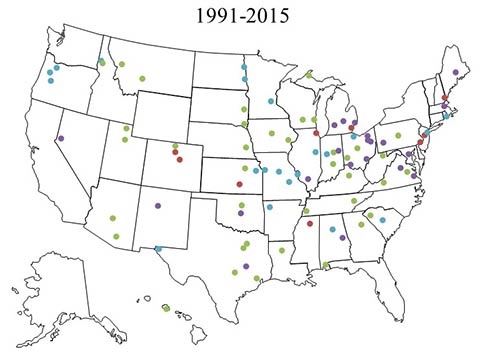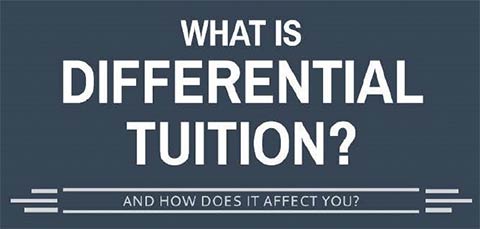The Affordability and Transparency Initiative represents a set of research projects aimed to improve the accuracy and accessibility of information pertaining to college costs. The initiative responds to the fact that tuition policies adopted at U.S. colleges and universities have become increasingly complex, which may disproportionately affect underrepresented students and fuel stratification.
Prior research has put the onus of responsibility on students, as consumers, to respond to trends in tuition and costs, without regard for the ways in which information is communicated by institutions or the ways this affects students’ access to and comprehension of financial information. The Affordability and Transparency Initiative turns the table, by focusing on the responsibility of institutions to provide transparent, accurate, and accessible information to the public. The Initiative is currently comprised of four innovative research projects. In our attempts to inform postsecondary practices, the results of our findings have been presented to organizations such as the Idaho State Board of Education and the Integrated Postsecondary Education Data System's Technical Review Panel.
Gregory C. Wolniak, New York University
Casey E. George, University of Louisville
Glen R. Nelson, Arizona State University
 Differential Tuition (DT) policies are the purposeful variation in undergraduate tuition by major area of study and/or year of enrollment. High-profile reports, such as College Board’s 2017 Trends in College Pricing acknowledge that the tuition figures reported do not fully incorporate undergraduate differentials, yet little is known about the prevalence of DT policies or the factors that lead to their adoption. Based on new primary data in combination with IPEDS records, the study shows the diffusion of DT policies in the U.S. and the institutional factors that predict the adoption of DT policies.
Differential Tuition (DT) policies are the purposeful variation in undergraduate tuition by major area of study and/or year of enrollment. High-profile reports, such as College Board’s 2017 Trends in College Pricing acknowledge that the tuition figures reported do not fully incorporate undergraduate differentials, yet little is known about the prevalence of DT policies or the factors that lead to their adoption. Based on new primary data in combination with IPEDS records, the study shows the diffusion of DT policies in the U.S. and the institutional factors that predict the adoption of DT policies.
With generous support from the Spencer Foundation (Grant #201600165), we have made available to the public data collected on the prevalence of DT policies among all four-year, public, research intensive universities. The downloadable file is available here.
You can also access the related study here. Please cite as Wolniak, G.C., George, C.E., & Nelson, G.R. (2019). The emerging differential tuition era among U.S. public universities. In Teixeria, P.N., Veiga, A., Rosa, M.J., and Magalhães, A. (Eds.). Under Pressure: Higher Education Institutions Coping with Multiple Challenges. Sense Publishers, 191–214
Laura A. Davis, New York University
Gregory C. Wolniak, New York University
Casey E. George, University of Louisville
Glen R. Nelson, Arizona State University
Cassie Kwon, New York University
Emily Zuccaro, University of Louisville
This qualitative case study examines a sample of 50 public colleges and universities, focusing on the packaging and presentation of financial information by institutions. The study marks an essential first step towards developing the kind of evaluative rubric needed to understand and ultimately advise institutions on how to improve the clarity and transparency of information presented to the public.
The study can be accessed here.
Casey E. George, University of Louisville
Gregory C. Wolniak, New York University
Glen R. Nelson, Arizona State University
Jared Colston, University of Louisville
 Employing an experimental design, this study focuses on the effect of providing information about Differential Tuition policies on the accuracy of interpreting increasingly complex tuition tables. The study drew from a random sample of 638 survey respondents, with half the sample receiving an infographic on differential tuition at the beginning of the survey (the Treatment group), and the other half receiving the same infographic at the end of the survey (the Control group). The results provide evidence that more complex tuition tables degrade the accuracy by which individuals interpret the information contained in the tables, with the largest effects occurring among individuals who had lower levels of previous exposure to higher education.
Employing an experimental design, this study focuses on the effect of providing information about Differential Tuition policies on the accuracy of interpreting increasingly complex tuition tables. The study drew from a random sample of 638 survey respondents, with half the sample receiving an infographic on differential tuition at the beginning of the survey (the Treatment group), and the other half receiving the same infographic at the end of the survey (the Control group). The results provide evidence that more complex tuition tables degrade the accuracy by which individuals interpret the information contained in the tables, with the largest effects occurring among individuals who had lower levels of previous exposure to higher education.
Glen R. Nelson, Arizona State University
Casey E. George, University of Louisville
Gregory C. Wolniak, New York University
This single-institution study takes a close look at the effects of Differential Tuition (DT) policy on undergraduate students’ sociodemographic composition. Drawing on 2005-2016 undergraduate enrollment data at a research-intensive, public university, the study utilizes a difference-in-difference approach to examine the enrollment effects of implementing DT policies. The primary focus of the analyses were the percentages of Pell-eligible students within specific Colleges (Arts & Science, Business, Engineering, etc.) before and after DT policies were adopted. Results show that, while overall percentages of Pell-eligible students increased from 2005-2016, the increases were markedly lower within DT-adopting Colleges: Business, Engineering, and Nursing. A clear pattern emerged in which DT policies appear to be driving away Pell-eligible students.

Dr. Casey George, Dr. Jessica Buckley, Jared Colston, and LTC L. Trice, Burkes recently presented their work on ROTC students’ sense of belonging on campus at the 2017 Annual Conference of the Association for the Study of Higher Education. The study found that a greater percentage of students who participate in ROTC or similar military-connected programs perceive discrimination on campus compared to their non-ROTC peers. However, ROTC participation status does not affect students’ sense of belonging on campus, but rather perceptions of a discriminatory campus had a negative effect students’ sense of belonging.